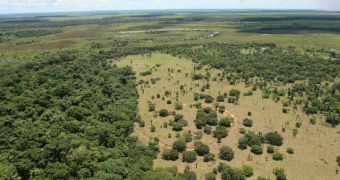February 2 marks the annual World Wetlands Day, and in order to celebrate this event, the Ramsar Convention on Wetlands of International Importance has decided to go public with the news that Bolivia has designated the world's largest protected wetland.
The World Wildlife Fund informs us that this conservation hot spot is roughly the size of the Netherlands and Belgium combined, meaning that it covers approximately 6.9 million hectares.
Furthermore, the Llanos de Moxos wetland, which is situated fairly close to the borders of Bolivia, Peru and Brazil, is mainly made up of tropical savannas.
Wildlife researchers explain that, according to studies carried out thus far, these regions are home to about 130 species of mammals, over 560 distinct birds, over 100 reptile species, several dozen amphibians, hundreds of fish and about 1000 plant species.
In other words, the Llanos de Moxos wetland is highly rich in terms of biodiversity, which translates into its also having a major cultural value.
Commenting on its decision to designate this wetland as a protected area, the Bolivian government issued the following statement:
“We recognize the significant role of these wetlands in the conservation of Mother Earth, as well as the importance of the declaration confirming the Llanos de Moxos as internationally protected wetlands.”
Furthermore, “This is an important step as we continue to forge a truly harmonious relationship between our peoples and Mother Earth.”
For the time being, the Llanos de Moxos wetland is inhabited by several groups of indigenous people, whose communities make up seven distinct territories.
Now that the wetland benefits from international protection, these people can trust that the natural ecosystems on which they rely in order to make a living will be properly looked after.
“The Moxos’ declaration is a victory for wetlands conservation in the Amazon region. It will help protect different ecosystems and landscapes, guarantee a balanced provision of goods and services for Amazonian inhabitants and secure the future of this rich but fragile area,” argued Luis Pabón, the country director for the World Wildlife Fund – Bolivia.

 14 DAY TRIAL //
14 DAY TRIAL //